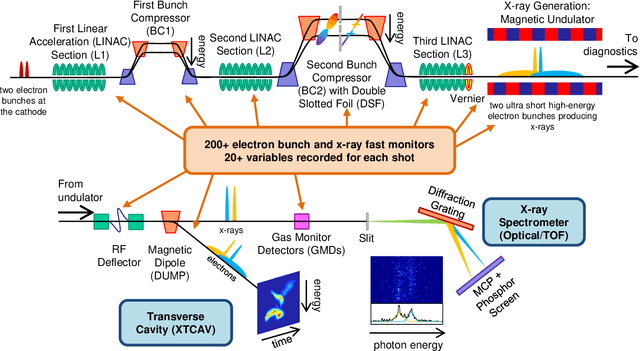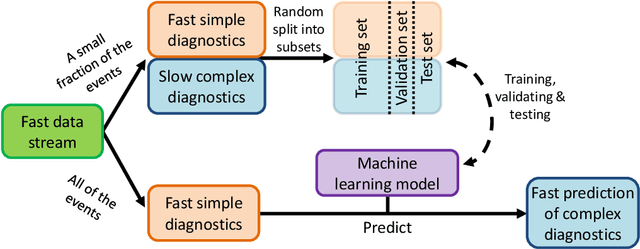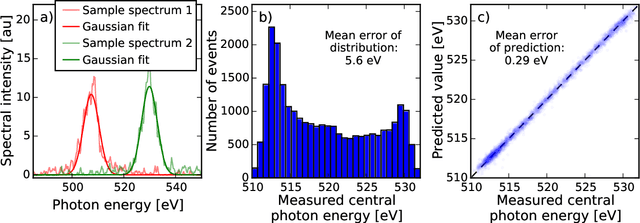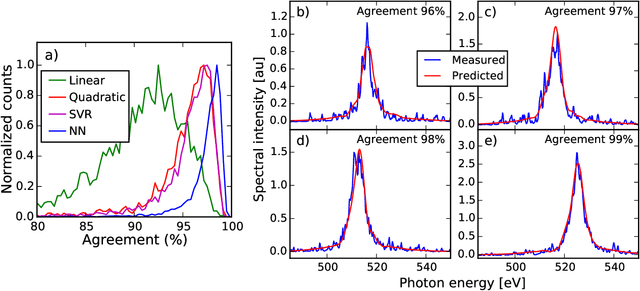T. Maxwell
Accurate and confident prediction of electron beam longitudinal properties using spectral virtual diagnostics
Sep 27, 2020



Abstract:Longitudinal phase space (LPS) provides a critical information about electron beam dynamics for various scientific applications. For example, it can give insight into the high-brightness X-ray radiation from a free electron laser. Existing diagnostics are invasive, and often times cannot operate at the required resolution. In this work we present a machine learning-based Virtual Diagnostic (VD) tool to accurately predict the LPS for every shot using spectral information collected non-destructively from the radiation of relativistic electron beam. We demonstrate the tool's accuracy for three different case studies with experimental or simulated data. For each case, we introduce a method to increase the confidence in the VD tool. We anticipate that spectral VD would improve the setup and understanding of experimental configurations at DOE's user facilities as well as data sorting and analysis. The spectral VD can provide confident knowledge of the longitudinal bunch properties at the next generation of high-repetition rate linear accelerators while reducing the load on data storage, readout and streaming requirements.
Machine learning applied to single-shot x-ray diagnostics in an XFEL
Oct 11, 2016



Abstract:X-ray free-electron lasers (XFELs) are the only sources currently able to produce bright few-fs pulses with tunable photon energies from 100 eV to more than 10 keV. Due to the stochastic SASE operating principles and other technical issues the output pulses are subject to large fluctuations, making it necessary to characterize the x-ray pulses on every shot for data sorting purposes. We present a technique that applies machine learning tools to predict x-ray pulse properties using simple electron beam and x-ray parameters as input. Using this technique at the Linac Coherent Light Source (LCLS), we report mean errors below 0.3 eV for the prediction of the photon energy at 530 eV and below 1.6 fs for the prediction of the delay between two x-ray pulses. We also demonstrate spectral shape prediction with a mean agreement of 97%. This approach could potentially be used at the next generation of high-repetition-rate XFELs to provide accurate knowledge of complex x-ray pulses at the full repetition rate.
* 12 pages, 8 figures
 Add to Chrome
Add to Chrome Add to Firefox
Add to Firefox Add to Edge
Add to Edge